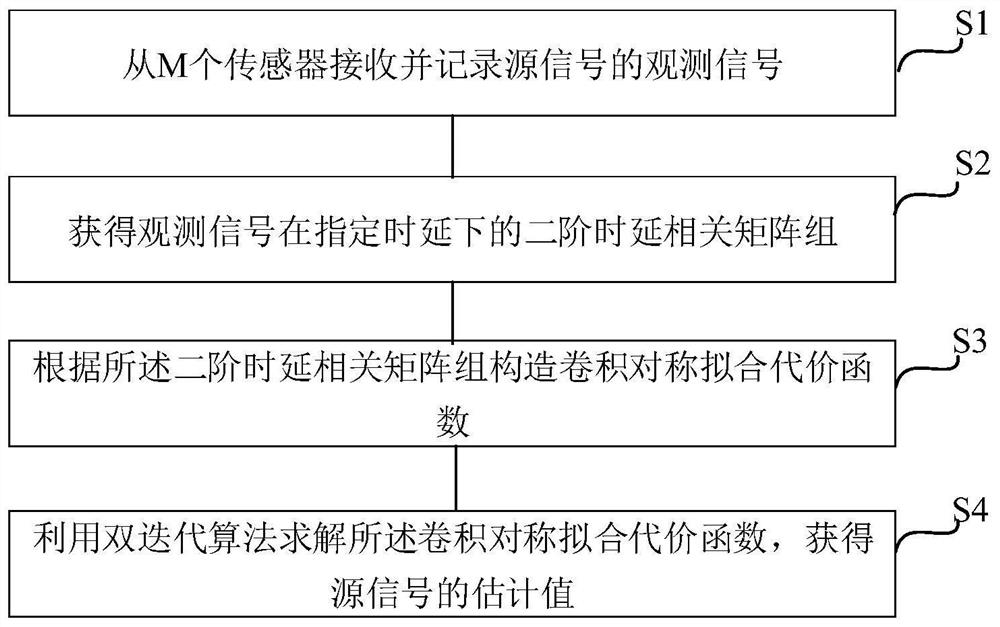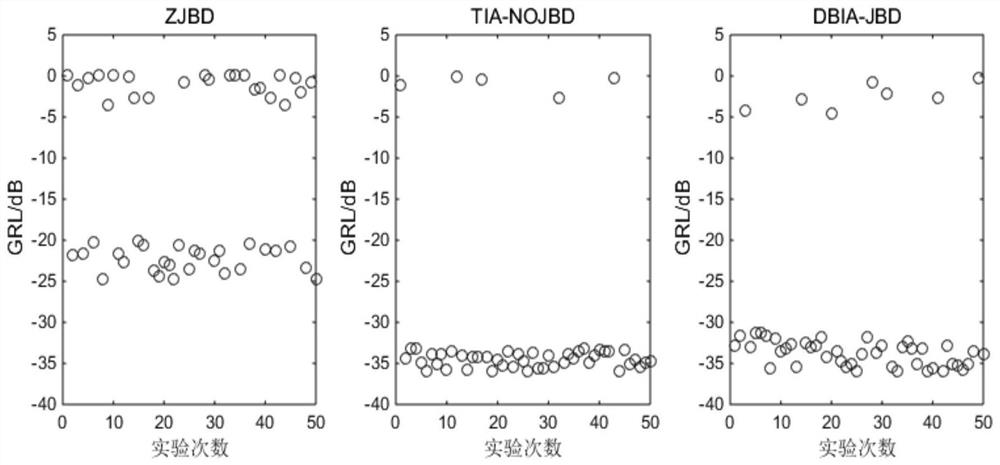Double-iteration non-orthogonal joint block diagonalization convolution blind source separation method
A joint block diagonalization and blind source separation technology, applied in the field of signal processing, can solve problems such as fuzzy arrangement, high time complexity, and complex operation, and achieve the effects of stable convergence, low time complexity, and fewer iterative convergence steps
- Summary
- Abstract
- Description
- Claims
- Application Information
AI Technical Summary
Problems solved by technology
Method used
Image
Examples
Embodiment Construction
[0079] In order to further explain the technical means and effects adopted by the present invention to achieve the intended purpose of the invention, the method for blind source separation of double-iterative non-orthogonal joint block diagonalized convolution proposed according to the present invention will be carried out below in conjunction with the accompanying drawings and specific implementation methods. Detailed description.
[0080] The aforementioned and other technical contents, features and effects of the present invention can be clearly presented in the following detailed description of specific implementations with accompanying drawings. Through the description of specific embodiments, the technical means and effects of the present invention to achieve the intended purpose can be understood more deeply and specifically, but the accompanying drawings are only for reference and description, and are not used to explain the technical aspects of the present invention. ...
PUM
 Login to View More
Login to View More Abstract
Description
Claims
Application Information
 Login to View More
Login to View More - R&D Engineer
- R&D Manager
- IP Professional
- Industry Leading Data Capabilities
- Powerful AI technology
- Patent DNA Extraction
Browse by: Latest US Patents, China's latest patents, Technical Efficacy Thesaurus, Application Domain, Technology Topic, Popular Technical Reports.
© 2024 PatSnap. All rights reserved.Legal|Privacy policy|Modern Slavery Act Transparency Statement|Sitemap|About US| Contact US: help@patsnap.com










